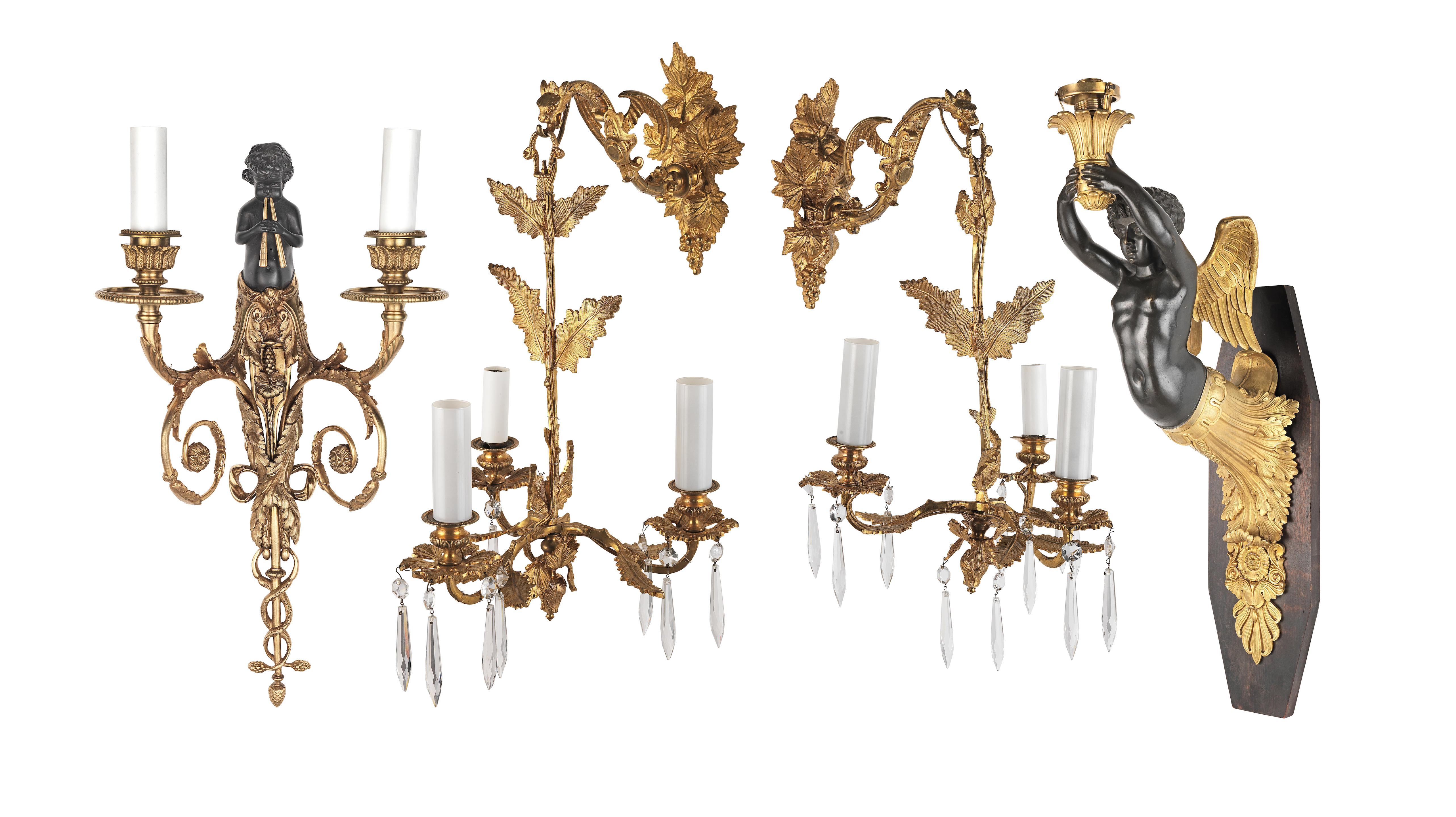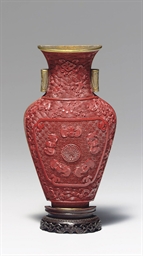A gilt-bronze wall applique early 18th century in the manner of Daniel Marot of cartouche shape, with an unidentifiable coat of arms beneath a canopy flanked by cherubs above the main panel depicting a crowned figure, within a border of strapwork and scrolling foliage Daniel Marot has long been recognised as the key figure in the creation and dissemination of the court style of William and Mary in both England and Holland. He was the first artist in England to have a profound effect on all the decorative arts and his influence lasted well beyond the ten years he was active in England. This was in part because of his own training as a designer and engraver at the court of Louis XIV and in part because he gathered around him a close circle of highly skilled craftsmen who understood the forms as well as designs, as well as he did. He came from a family of architects and artisans. His father Jean Marot was a well-established architect in Paris in the middle of the century, while his mother came from a Dutch cabinet-making family. Daniel Marot began his career training as an engraver in the circle of Jean le Pautre and Jean Berain. In 1685 when he left France, he went to Holland where he was soon taken up by William himself and was soon invloved in designing the interiors for him at Het Loo as his published engravings of the entrance hall, dining room and library show. In these engravings most of which were collected and printed from 1703 onwards, Marot use the title `dessignateur du roi' a title which imitates practice at the French court and shows the general nature of his role. He was employed directly by the crown but he was listed among the members of Mary`s household where he is specifically called a designer. Marot`s designs for ornament evolved from the designs of grotesque ornament invented by Jean Berain and prior to leaving France he had engraved several designs after Berain. Through his designs this repertoire of French ornament was brought to England. Moreover they were intended to be used by craftsmen in almost every medium, among them textiles, silver, furniture and ceramics. Among his designs, published in 1703 are some for furniture which include wall appliques. The present wall applique shows unmistakeable links with Marot`s published designs. The central panel showing a crowned figure probably symbolises the accession of King William III to the English throne. The lambrequin above this panel, within a border of strap work and foliate scrolls has all the exuberance of naturalistic ornament and movement which appears in his drawings of the period. 59cm,. high, 35cm. wide; 1ft. 11¼in., 1ft 1¾in.
A gilt-bronze wall applique early 18th century in the manner of Daniel Marot of cartouche shape, with an unidentifiable coat of arms beneath a canopy flanked by cherubs above the main panel depicting a crowned figure, within a border of strapwork and scrolling foliage Daniel Marot has long been recognised as the key figure in the creation and dissemination of the court style of William and Mary in both England and Holland. He was the first artist in England to have a profound effect on all the decorative arts and his influence lasted well beyond the ten years he was active in England. This was in part because of his own training as a designer and engraver at the court of Louis XIV and in part because he gathered around him a close circle of highly skilled craftsmen who understood the forms as well as designs, as well as he did. He came from a family of architects and artisans. His father Jean Marot was a well-established architect in Paris in the middle of the century, while his mother came from a Dutch cabinet-making family. Daniel Marot began his career training as an engraver in the circle of Jean le Pautre and Jean Berain. In 1685 when he left France, he went to Holland where he was soon taken up by William himself and was soon invloved in designing the interiors for him at Het Loo as his published engravings of the entrance hall, dining room and library show. In these engravings most of which were collected and printed from 1703 onwards, Marot use the title `dessignateur du roi' a title which imitates practice at the French court and shows the general nature of his role. He was employed directly by the crown but he was listed among the members of Mary`s household where he is specifically called a designer. Marot`s designs for ornament evolved from the designs of grotesque ornament invented by Jean Berain and prior to leaving France he had engraved several designs after Berain. Through his designs this repertoire of French ornament was brought to England. Moreover they were intended to be used by craftsmen in almost every medium, among them textiles, silver, furniture and ceramics. Among his designs, published in 1703 are some for furniture which include wall appliques. The present wall applique shows unmistakeable links with Marot`s published designs. The central panel showing a crowned figure probably symbolises the accession of King William III to the English throne. The lambrequin above this panel, within a border of strap work and foliate scrolls has all the exuberance of naturalistic ornament and movement which appears in his drawings of the period. 59cm,. high, 35cm. wide; 1ft. 11¼in., 1ft 1¾in.














.jpg)
Try LotSearch and its premium features for 7 days - without any costs!
Be notified automatically about new items in upcoming auctions.
Create an alert